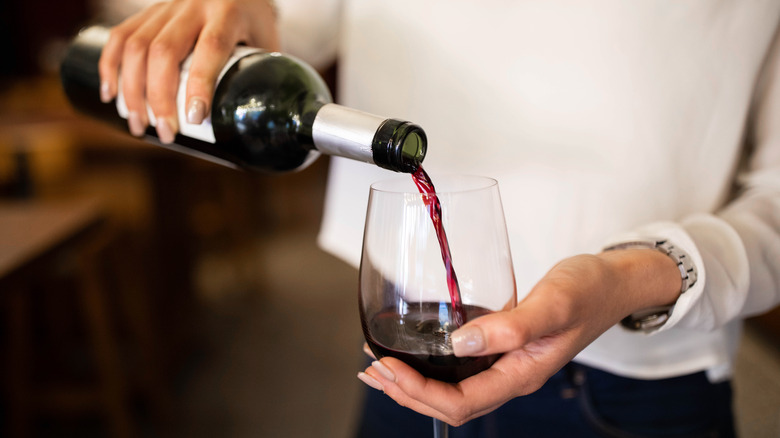How The Tasting Experience Differs Between Sweet And Dry Wines
Everyone has a favorite wine or two, even if your favorite flavor is "boxed." Maybe you're a diehard dessert wine fan, or maybe you pride yourself on drinking wine so dry it makes your cheeks pucker. Either way, wine shelves span a continuum from extra dry (aka "brut") to dry, semi-dry, semi-sweet, and sweet — and the tasting experience couldn't be more different with each type.
It all comes down to one key factor: acidity. A highly acidic wine will make you salivate, which depletes the moisture in your mouth and impresses the feeling of "dryness." Dry wines might make it feel like the insides of your cheeks are adhering to your cheeks or induce a cannabis-esque dry tongue. On the flip side, sweeter wines might offer a syrupy mouthfeel, draping your tongue in a sort of viscous blanket of sugar. As a visual cue, a thicker sweet wine might even coat the sides of your wine glass. Indeed, wine tasting is essentially a sexy chemistry experiment and sweetness and acidity go hand-in-hand.
The sweetness or dryness of a given wine is determined by how much sugar it holds onto during its unique fermentation process. Dryness or sweetness is also heavily influenced by a wine's tannins, which add bitterness and create a dryer mouthfeel. On a biological level, tannins actually reduce the taste buds' ability to perceive sugar.
There are also ways to tell whether a wine is going to be dry or sweet without even tasting it.
Acidity, ABV, and sugar content: The unsung orchestrators
Picture this: You're browsing your local wine shop, or perusing the wine list at a fancy restaurant. You know what you like, and can therefore rely on a go-to Riesling or Cabernet Sauvignon as a safe bet to please your palate... right? Not necessarily. Due to the processing-related reasons we just listed, any variety of wine has the capacity to be sweet or dry. What's a struggling sommelier to do? How can you tell whether a wine will be dry or sweet without tasting a single drop? Enlist the guidance of a wine tech sheet. These can be found for specific types of wine and will provide stats on what's inside, including dryness or sweetness, which is indicated by a percentage amount of residual sugars. As a rule, 1% indicates a dry wine, 2 to 4% indicates mid, and 5% or above is sweet.
Sweet varieties also often tote lower ABVs. Scientifically, this is because sugars are converted into alcohol during the fermentation process. Therefore, as alcohol content becomes higher, sugar content becomes lower. A wine with an 11% ABV or less is generally going to be pretty sweet. The exception here is port wines, which have higher alcohol contents and are also sweeter in flavor. Some high-acidity wine producers even bottle their products with some of the leftover fermentation sugars for balance.
To get the most out of your tasting, munch on some neutral palate-cleansing snacks like nuts, kalamata or Castelvetrano olives, crackers, and baguette slices.

